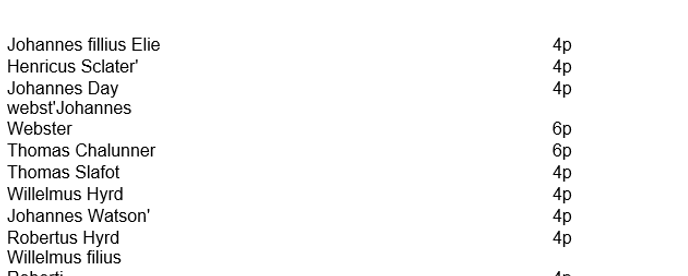



Rylstone Project
Lodge Farm Barn by Andrew Forman
Heading 6
The Poll Tax Returns for Rylstone in 1377 and 1379
At the beginning of the 14th century, the king’s taxes were levied on movable property. People had to have their property valued by tax officials. They then had to pay a percentage of the value (most years it was 10%) to the king. People who owned property valued at less than £10 did not have to pay the tax. The rich thought it was unfair that most people did not pay the movable property tax.
In 1334, Parliament managed to persuade King Edward III to change the tax system. The king's taxes were now imposed on communities rather than individuals with property. Under this new system of taxation, it was the lord of the manor who decided how much each individual in the village should pay in tax (lay subsidy). The amount required by each community was fixed at the amount which had been levied in 1332.
These were based on one fifteenth for rural, and one tenth for urban areas and the royal demesne. The tax was therefore known as a 'fifteenth' and 'tenth' from that time until its abolition in the 17th century. The poorest inhabitants were exempt. This form of taxation was the mainstay of medieval taxation.
In January 1377, King Edward called a parliament to raise money to pay for a new army to attack France. There is a record of the parliamentary discussion in 1377 when, after rejecting an income tax, a purchase tax, and other novelties, it was decided to levy the flat rate of 4d. a head ('poll') from everyone over the age of 14 who was not a professional beggar. This was designed as a supplement to the tenths and fifteenths taxes which were already levied. This was a regressive tax, taking in proportion more of a poor man's income than a rich man's, and when Richard II's Parliament granted a second poll tax in 1379 there was an attempt to make the tax more acceptable by grading the payments according to rank. Nevertheless, there is evidence that there was marked evasion of this tax.
The poll-tax receipts of 1377 are simply a statement that the collectors have received money from the village representatives, the returns of 1379 have lists of names and amounts paid.



